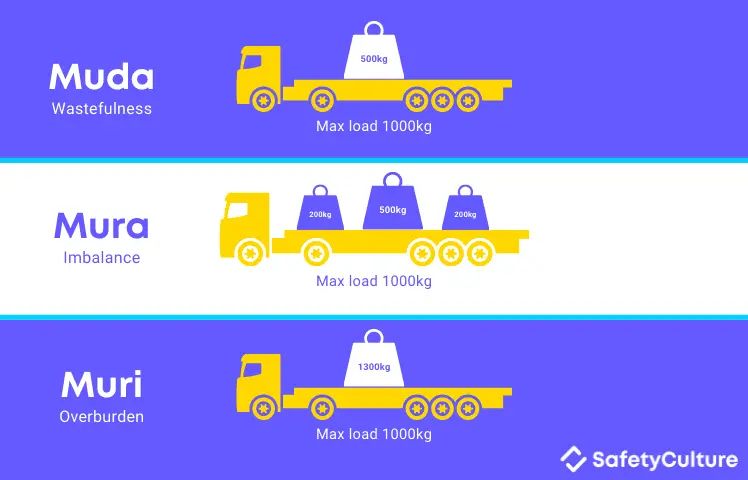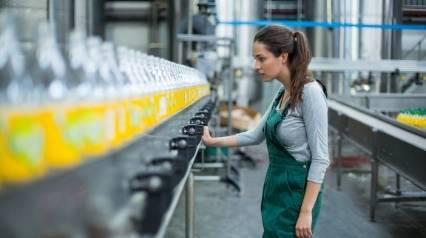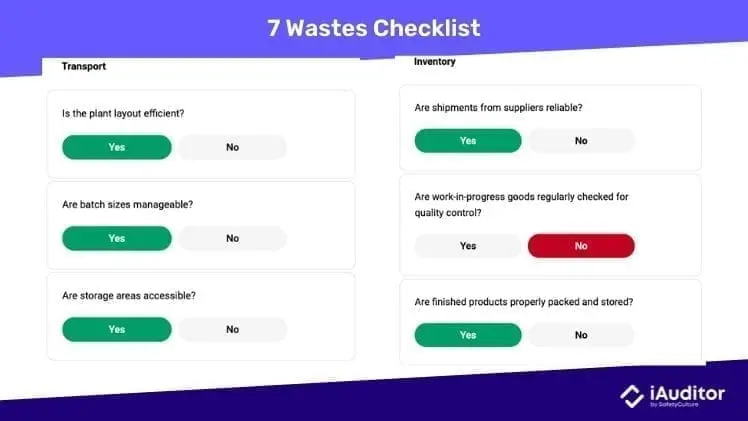What is Muda?
Muda in lean management is any activity that doesn’t add value to the business. This Japanese word translates to “wasteful” in English, the opposite of value-added work and productivity. It’s a best practice in manufacturing to reduce and eliminate wastefulness in order to improve efficiency and increase profitability.
Importance of Tackling Muda
Businesses, especially in the manufacturing industry, are well aware of the costs of not maximizing the capacity of their production. Fundamentally, that’s muda. This had been a key concept in the Toyota Production System (TPS), which came before lean management. TPS highlighted the importance of eliminating waste by reducing tasks or jobs that can be difficult for an employee. This means that there are work or activities that require a special skill set from a worker. Businesses should hire employees who are qualified for the job or redirect and train employees to the correct assignment in order to reduce wastefulness during production such as defects and variations. Another area of muda is overproduction and overprocessing. Lean management is all about optimizing and maximizing the utilization of available resources which is hindered by wastefulness.
Take note that there are necessary activities that are non-value adding which are not considered muda. Some examples are business operations and requirements by law or code.
What are the 7 Mudas?
Muda isn’t just about the typical waste, most people would have thought of garbage. That’s not wrong but it’s not all that there is. In TPS and lean management, muda is subdivided in seven categories. Originally created by the chief engineer in Toyota the seven wastes (commonly abbreviated to TIMWOOD) are:
1. Inventory
This waste is materials that aren’t used or finished goods that haven’t been sold. Inventory can take up a lot of real estate and can be costly to store. Finished goods that are sitting around can deteriorate or expire if it’s a perishable good. Work in process inventory can turn into waste if it was scrapped or if it isn’t actively used in production.
2. Transportation
This type of waste represents the unnecessary steps between the production processes. For example, during the transportation of materials from one location to another, is there any movement that can be eliminated or reduced? Additionally, it’s considered muda if the load of the vehicle used to transport these materials is under capacity. Another example is documentation. Documentation includes a lot of steps such as filling out paperwork, signing documents, passing these documents to different departments, etc. There are a lot of tools available that can make this process more efficient such as using software and applications.
3. Motion
Unlike transportation which is between the processes, motion is a waste when there is unnecessary movement within the process. Transportation is about the movement of product and materials while motion is waste from people and equipment. This is the waste that affects the people working on the product and the machines used during production. Are the workers doing more steps than necessary or were any injured during their shift? Did the equipment experience any downtime?
4. Waiting
This waste is generated when there are idle tasks. Sometimes there is no remedy but to wait. For example, workers taking breaks in between tasks. Another example, when there is a queue for the next process of the production line due to the equipment’s capacity to finish the current load.
5. Overprocessing
This waste is generated when more work is done to finish a task or output. A method to eliminate this muda is to determine the root cause of the additional steps or processes conducted. Is the overprocessing caused by human error or is there any equipment and machine that needs to be maintained or repaired?
6. Overproduction
It’s wasteful to produce more than what can be shipped out and delivered. Overproduction also affects other muda categories such as inventory and transportation.
7. Defects
It’s a waste when a finished product has defects. Most defective products are scrapped and thrown away which increases costs and leads to reproduction. Two ways to reduce defects is to conduct product testing and set routine inspections during the production process.
3M Model: Muda, Mura, and Muri
- Muda – Lean management concept for wastefulness.
- Mura – This concept is having an imbalance and inconsistency in the production process. This is a main principle for just-in-time (JIT) production systems and can affect workers and machines. It’s difficult to eliminate mura but the unevenness of the workload of workers and machines can be reduced by using the Heijunka concepts, kanban tools, and other methods like Yamazumi charts.
- Muri – If there is an imbalance then there can also be an overburden of workload for workers and machines. A way to prevent muri is to evenly distribute tasks. Also ensure that the workers have the skill set required and that the assets, including equipment, used are correct.

Muda, Mura, and Muri | SafetyCulture
Example of Muda
Here is an example of a 7 waste checklist that you can use to reduce wasteful activities and processes. This template is separated into sections for each category: Transportation, Inventory, Motion, Waiting, Overproduction, Overprocessing, and Defects. Ensure that activities are value-adding and resources are maximized by utilizing this muda checklist:
Eliminate Muda Through Kaizen
Kaizen is a concept that helps eliminate the 7 wastes of muda. It’s a Japanese word that translates to improvement. The primary goal of kaizen is to make processes more efficient, this can come from small incremental but continuous improvements. The 5 kaizen steps are:
- Determine the root cause
- Consider how to address the root cause
- Determine if changes are consistently carried out
- Check if these changes are impactful or adds value
- Discover more ways to improve
Digitize the way you work “
Eliminate manual tasks and streamline your operations.
Get started for FREEDetect Muda with SafetyCulture
Knowing which activities that aren’t adding value is the first step in eliminating waste. Incorporating a digital tool like SafetyCulture (formerly iAuditor) can streamline processes such as documentation and help your organization continuously improve. Key features include:
- 100% digital, reduce waste from paper work
- Thousands of free customizable manufacturing templates that can be downloaded from the Public Library
- Automated scheduling and being able to assign workers for specific tasks
- Obtain signatures
- Upload media files such as photos when words aren’t enough
- Secure cloud storage




